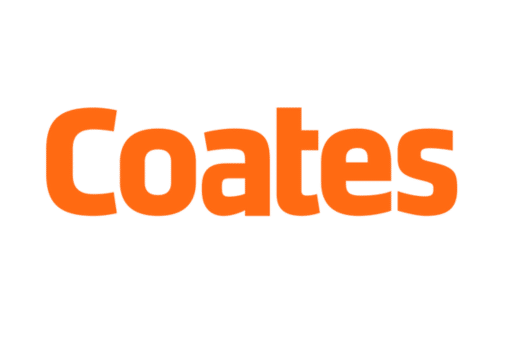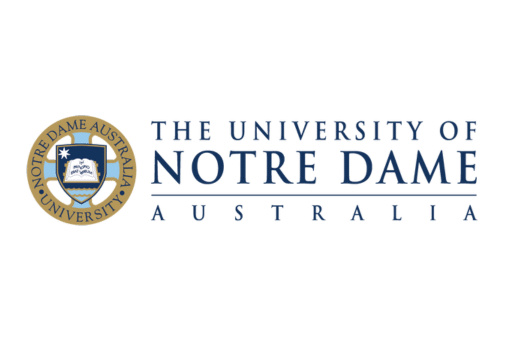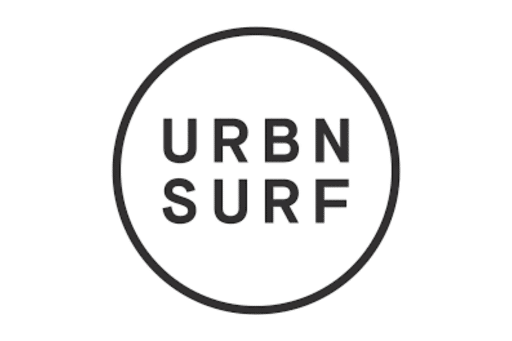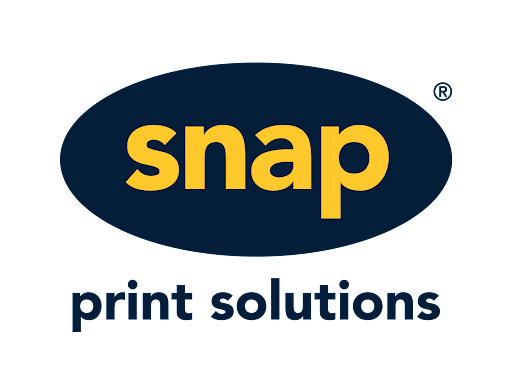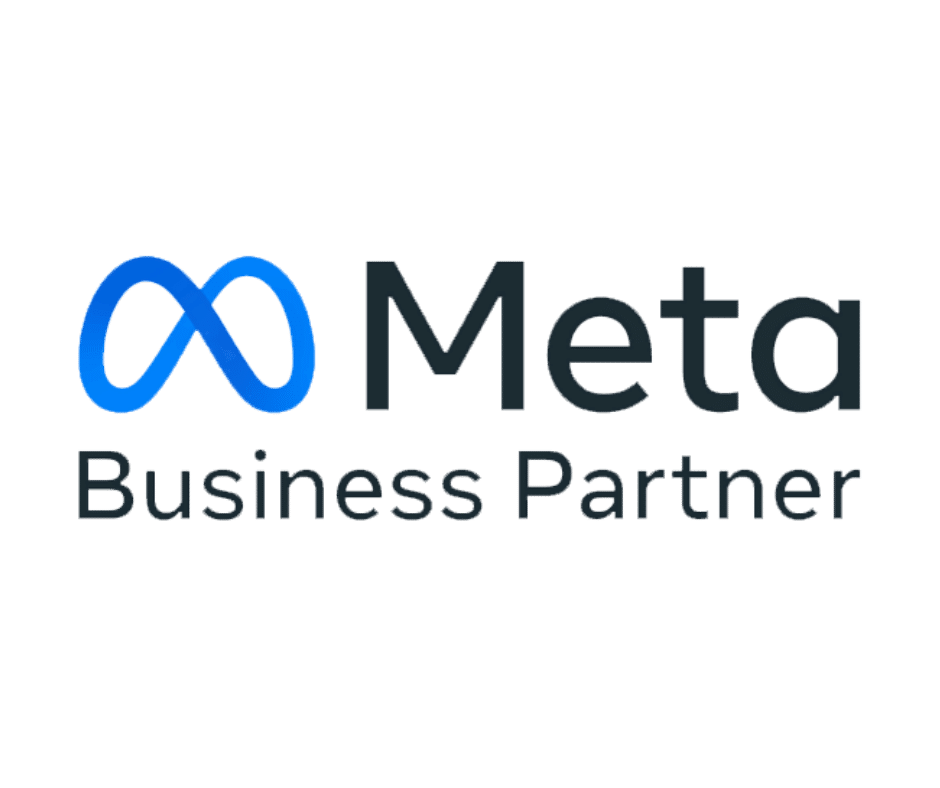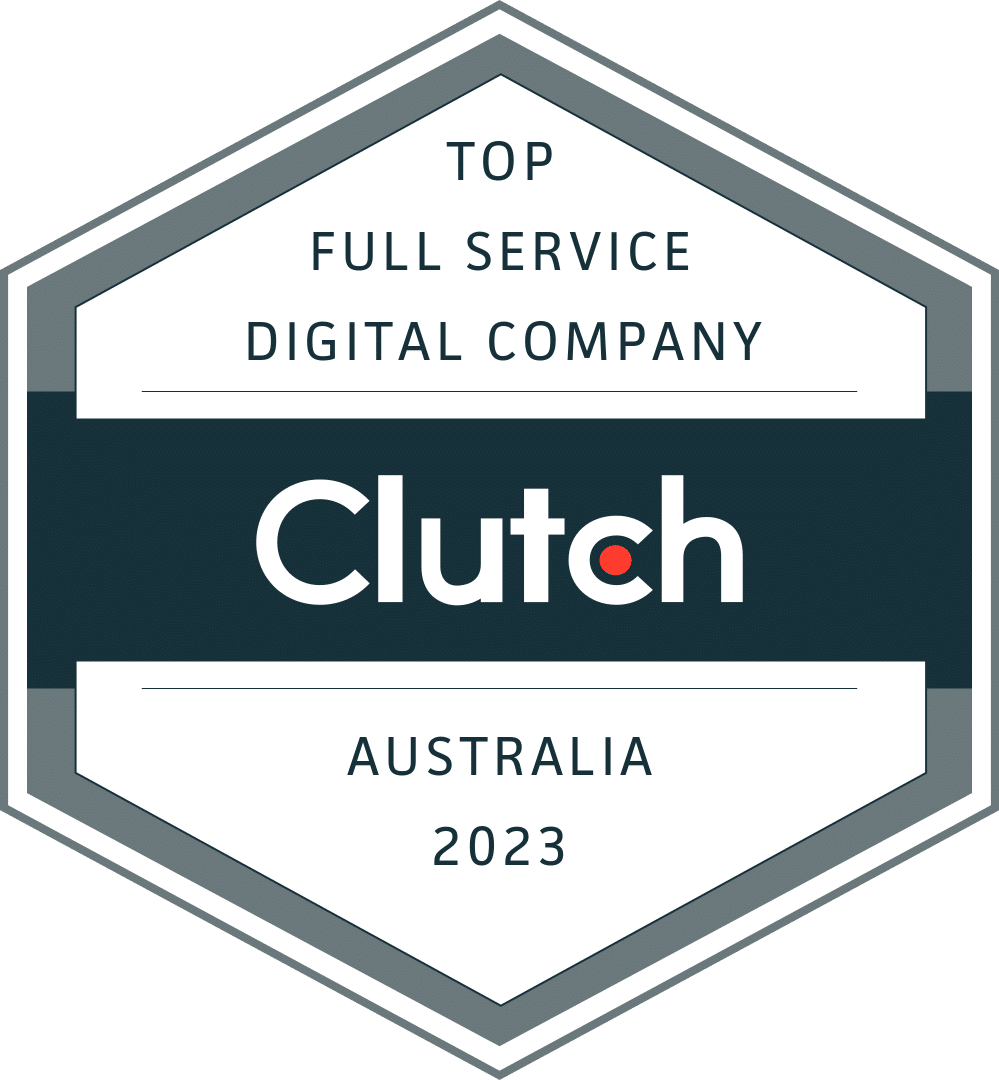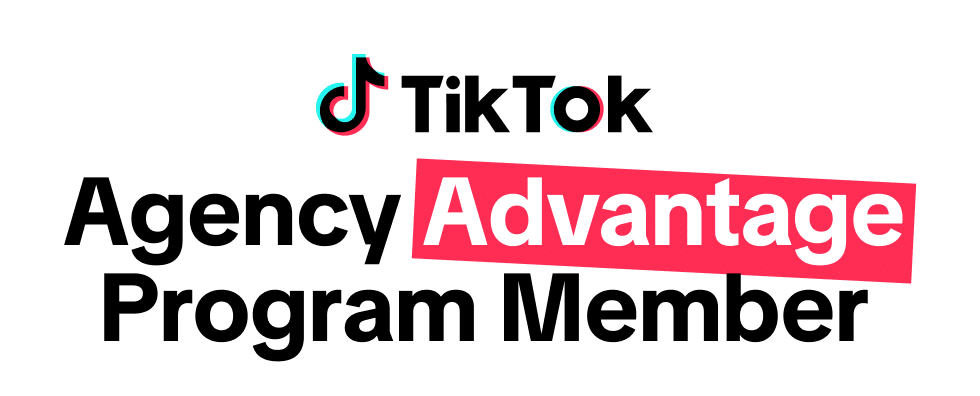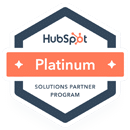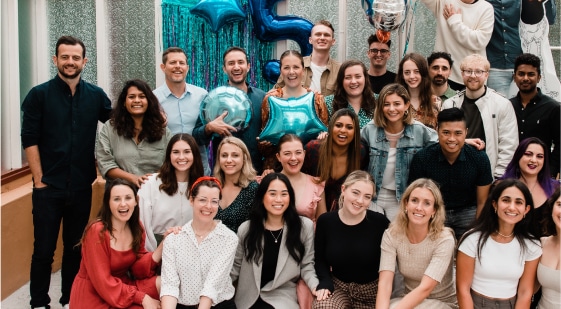Emails with Mailchimp: The Power of First-Party Data, AI, Great Creative and More
Episode Description:
Email marketing might not be the newest toy in the digital toolbox, but it’s still one of the most powerful. In a time when AI is transforming how we work and big platforms are making it harder for businesses to own audience relationships, marketers are turning back to the basics - and doing them better.
Host James Lawrence sits down with Anthony Capano, Regional Director at Intuit Mailchimp, to talk about how email is thriving in Australia, how personalisation and AI are changing the game, and what smart brands are doing to get ahead.
Key Takeaways:
- Why email marketing is far from dead - and what Mailchimp’s intriguing SXSW campaign was really about
- How Australian brands are achieving some of the world’s highest email open rates
- The resurgence of email in an era of rising media costs, fragmented attention and zero-click search
- Why first-party data is becoming a non-negotiable for marketers
- The role of AI in scaling hyper-personalisation without stretching your team
- Mailchimp’s evolution: from a simple email tool to an integrated platform with SMS, automation, CRM and 300+ tech integrations
- How Australian brands are using Mailchimp to manage their data, run omnichannel campaigns and boost ROI
- The growing importance of creative and consistency across channels
- What the future holds for marketing teams using Intuit Mailchimp
Featuring:
About the Guest:
Anthony Capano is the Regional Director for Australia and New Zealand at Intuit Mailchimp. With over two decades of leadership experience across global ad tech and martech companies, Anthony has launched international brands into APAC, led localised campaigns for names like Woolworths, Telstra and IKEA, and previously served as Managing Director for North America at Rakuten Advertising.
Now back in Australia, Anthony is focused on expanding Mailchimp’s local footprint - building out on-the-ground support, growing strategic partnerships and helping marketers unlock the full power of email and first-party data.
You can follow Anthony on LinkedIn.
Transcript
James Lawrence: Welcome back to the Smarter Marketer podcast. I'm here today with Anthony Capano. Anthony, welcome to the pod.
Anthony Capano: Thanks for having me. Good to see you again.
James Lawrence: Yes, I'm excited for the conversation today.
So Anthony is Regional Director of ANZ at Intuit MailChimp. So essentially you oversee the MailChimp operation in our region. Um, prior to the current role, you've got more than two days. Two decades experience of leadership, , in a whole range of different ad tech and my tech, um, platforms. Previously, you were managing director of all of North America at Rakuten advertising.
You've launched global organizations into APAC and also worked on localized campaigns for brands like Woolies. Telstra and Ikea. , so loads of experience running really successful businesses. , you're back in Oz after a long period abroad. Um, so I think like what attracted you to, to the Mailchimp role?
Anthony Capano: Well, look, firstly, like I said, thanks for having me. I really appreciate it. And, uh, it's good to catch up with you again. , I think for me, yeah, so I did spend some time, , in other markets as you saw with, , with Rakuten and obviously I've been in their MarTech and AdTech space in, , in APAC for a while.
Uh, so when I first started having discussions, , with, , with the folks there, , and once I, uh, started to unpack it more and more, , it really just blew me away, to be honest. The size of the business that we have out here in Australia and New Zealand, , And we have hundreds of thousands of customers in this market.
But what probably excited me the most was the fact that we've actually never been boots on the ground in the market. So even though we've been servicing the Australian, customers for over 20 years, we've never actually spoken to them locally. We've never had a team here out of Australia or New Zealand speaking to them in real time, , and making sure that they had , the capabilities understood in terms of the platform as well as the service and the support that they deserve.
So that's what really excited me to, , to join the, uh, join the business.
James Lawrence: Always good to step into a role where there's lots of opportunity, right? Yeah, you prefer that, wouldn't you?
Yeah, absolutely. There was the kind of quite famous, , installation at South by Southwest, the MailChimp one, which I think it was like, uh, email. He's dead. Yeah, sure. Like a pretty strong, , strong statement for, for business. That's kind of built on the backbone of email. So I guess like. Why that campaign and , where is MailChimp playing now?
Right? Because it's a space that has changed so much, um, in many ways over the last kind of 5 to 10 years. Yeah. New competitors, probably consolidation in many ways. Um, yeah, like why, why that campaign
Anthony Capano: well, look, as I mentioned about the brand, , it's a fantastically creative brand, very innovative, and we have a lot of fun with it.
And I think that certainly, , caught the eye. , that was, , our real, , show of investment in the market. And it was a pretty grand show, , as you probably saw, uh, to really tell our partners, , as well as our customers that were in the market. , as I mentioned, we've been servicing the market for many years, but we haven't had boots on ground.
So that was sort of our, uh, , show our continued investment in this region. And that was a great way to do that at South by, which was a great event actually, , across the board, uh, email is dead. And I , In all honesty, we all know that email is absolutely not, , dead and nowhere near that, and it's alive and thriving, , and particularly actually in this market.
And Australia amazingly has, on average, , open rates of around 35, 36%, uh, and have some of the highest, , open rates anywhere in the world, as well as the click through rate. So we know that email is absolutely thriving this market, um, in terms of where email is going, I think, um, When I look back and Take a bit of a wider view of the overall media landscape.
I think if you think about how media has changed over the last few years, and you know this really well, but when you look at some of the other channels, it's become a lot more costly in short to buy other media. It's also extremely fragmented. Uh, and also very saturated. So we've seen, um, in the last few years in particular, many brands are looking back to their core, but back to their loyalty base.
I'm not saying, uh, have a necessary loyalty program with a card in your wallet. It's more about, okay, how can we look at our existing customers and grow that base , and use the base that we have , to drive better communication. So I think just generally from a marketing ecosystem perspective, there's been a lot of change and that's probably.
Um, had a lot of brands look back at their email if they hadn't necessarily invested there and invest more. And I think that's one big thing there that's, um, that's changing the overall marketing ecosystem.
James Lawrence: It does feel, , every year e consultancy will do that survey of what are the channels that marketers find to drive the best ROI.
And every single year I email. Consistently sits up there as the channel that does drive best ROI and I think your point's an interesting one. We've been banging on about it for a long time now, which is the way that digital has moved over the last 10 years is Google has kind of moved. Closer and closer to the zero click search where they're trying to keep as much traffic as possible within the platform.
You look at the rise of Chachi BT, which we don't yet see from cannibalization of Google search, but it's Google's hasn't actually kind of kept its market share, if not grown and it's grown its number of searches over the last 12 months, but, . The inevitable rise of, , AI as a way that we search largely keeps users in platform, Facebook, Instagram, TikTok, they're all built to keep you in platform, right?
And for us, when we're working with our customers, first party data and the ability to then build that as, , an asset for your business. To then take messages out, control when you take messages out, definitely through COVID, the clients of ours that had awesome first party data and could then take advantage of that to send out emails, send out text messages, , potentially build audiences to then, , more tightly target users.
Through advertising. , it does feel that it is one of those key things that businesses can do to protect themselves against that kind of rise of the big platforms trying to hold eyeballs and impressions to themselves. Right?
Anthony Capano: Yeah, absolutely. Um, so look, I think just generally, particularly over the last few years before those changes that you've mentioned.
Customer data or data generally have to be a marketer's best friend, right? If you didn't have it previously, you're investing in driving that now for your business, um, your own data that you can control. I think that's been prevalent when it comes to email. Um, stats that we've seen is, , 42, , ROI in terms of every dollar spent.
So that's pretty strong. I'm sure that's different for , some brands, but when you're looking at that for every, , dollar spent, you're generating 42. Pretty strong there, , for a channel that is certainly cost effective, , and that is in your control. , so I think that's something that, , we'll continue to see across the email space.
, and then if you're a marketer, , and you're not investing in your own data, then I think there's something from a future proofing perspective that we need to be concerned about. So I think a lot of marketers now are savvy enough to understand that, realize the role of their own, channels, email being.
One of the strongest ones.
James Lawrence: Yeah, 100%. If you're not taking your first party data seriously, you're just going to have a massive competitive disadvantage moving forward against your competitors that do, right?
Anthony Capano: Absolutely. And , so what are you then doing with the data?
So one trend that we're seeing, , certainly in Australia, but it's probably in other markets as well is really the shift towards hyper personalization and interactive email campaigns. So. The way that is fueled and it's taken us a few minutes to get there and it's a marketing podcast. So probably unasked, but it's through, , through AI, , because, , particularly in the Australian market, marketing teams generally aren't getting larger, right?
Um, marketing decisions are getting more complex. Media channels are getting, , costly, but also, as I mentioned earlier, um, more saturated. So the role of a marketer is not getting easier. , so how can we make that easier? And it is through the technology that's available out there, and a lot of it is now fewer, particularly in the email space through A.
I. And we've seen that it's an incredible, valuable tool, um, putting our data to work for us, but also taking work off our plates. And even though some consumers do remain skeptical about the use of it, I think there's really pragmatic approaches to the use of A. I. That certainly makes the life of the market easier.
Yeah. And drives better results from a performance perspective. So I think that's been certainly a change that we've seen over the last few years
James Lawrence: It'd be good to, talk a little bit about the MailChimp product, my sense of the product is, you know, you go back to say 2010, you've got campaign monitor, you've got MailChimp as these, um, quite friendly, easy to use in my marketing platforms that probably would.
For smaller businesses, very much single channel, right? Email marketing was kind of what you did. , and then I think you'd look at, the rise of HubSpot starting off as a marketing automation platform and then probably growing to be a bit more of an everything type platform, starting for small biz and then , slowly moving up market right now into mid market and enterprise and then you always had for enterprise customers, salesforce dynamics with various, you know, marketo, all kinds of things you can plug into those, um, what is the MailChimp product now? , as we rip into 2025.
Anthony Capano: I think, um, , ease and usability. , has been the core and will continue to be the core. , to my earlier point around, , a marketer's role , and teams getting more challenged. I think, , the ease of platform is going to continue to be prevalent for us.
And that's something we don't want to be, , walking away from because that's been, you know, a lot of what our success has been founded on is that ease of platform and the ability to execute certain channel campaigns. So I think that's absolutely at our core. Intuit, is, , a significant player, a tech and financial platform globally.
And I think that's, , been a real, um, points in our , last few years in terms of really investing further into our platform, , and that's something that we're going to continue to do. And last year you saw us bring in SMS into the platform. , and if you're in the platform, you can, , now , run other campaigns outside of email and SMS from within the platform, which again is, Really, the ecosystem play that we're also looking at in terms of being able to run your marketing activity from the MailChimp, , dashboard, which I think is really important.
James Lawrence: With, , SMS, so we've, we have a Rocket client running MailChimp that, you know, uses that capability. Is that 12 months in Australia and New Zealand, or is that 12 months globally in terms of the SMS, , feature, or is that? It's been out there a bit more in North America.
Anthony Capano: Yeah, , it was brought out in North America first and then we expanded that into our international markets.
So we're sitting just shy of about 12 months in Australia now. , so we're seeing a lot of brands. Understand the value of having email and SMS within the same platform. Understanding the role that email and SMS play in their customer journeys, as well as the role that play within automation. So yes, we've seen some great success bringing SMS into this market, , which is fantastic.
James Lawrence: It's a double threat, right? , to have those two in the one platform, um, instead of the logical benefits for lots of customers.
Anthony Capano: Yeah, and then it's also third party tech integrations. , so we've spent a lot of time and effort in, bringing, um, And we have over 300 integrations in our platform.
And we're also bringing greater depth in some of those as well. And we've spent a lot of time, effort and resources in that. So yes, certainly additional channels and additional integrations. So we are building a platform that small, medium and enterprise businesses can use.
James Lawrence: And would many customers be using it as their CRM?
Like, , is it a CRM for certain types of businesses?
Anthony Capano: Yeah, it is. Yeah, , they use that certainly , as a hub, , for their data, , which is brilliant. And obviously, depending on the size of your business, you're using it , in different ways.
But, , we've seen brands certainly, Use it in that way. , and then obviously then use it for different channels as well. And there's obviously different ad managers out there in different platforms that brands can be using. And our role has been okay. Well, whatever you are using, we've got the integration for you.
Um, so that's gonna be Continue focus of our roadmap from a product perspective, , and making it , all harbored within an easy to use platform.
James Lawrence: And what parts of the market do you think you play generally quite strongly? , is it size of business, , industry verticals, lead gen, ecom, areas where you feel you do play really strongly.
Yeah,
Anthony Capano: good. Great. I think, look, first of the size of the business and the customers that we have in this market in Australia alone, is significantly one of our biggest markets across the globe.
And , we don't necessarily have a niche in one vertical, which I actually think that's really exciting. So we've got brands from government, from automotive, from sports and down to hospitality, strength in retail and e com, it really does vary when you've got.
Such, , a breadth of, client base. , probably one area that, , we're investing more in now, , is our agency partnerships, you know, this firsthand. Mm-hmm . Of course. Um, but we understand the role of the agencies, , in, , making decisions or representing brands. , we launched our partner program last year when we entered the market.
That's continuing to evolve. We continue to invest in that. Invest in our team. So certainly from a vertical approach with we almost touch. I think I would suggest every vertical great depth in all of them where we're certainly investing more and more into is our strategic partners and agencies in this market.
And that's where you'll see a lot of it develop over the next sort of 6 to 12 months as well.
James Lawrence: Yeah, nice. And what does ANZ look like in terms of the boots on the ground? Just I guess for listeners that might use MailChimp or yeah, in terms of support and roles that are now out here.
Anthony Capano: So we've got our onshore teams now. So , when we first started, we invested very quickly in a customer success function. , as I mentioned to you earlier, we'd never really, , managed out of local, presence, local offices, local hours, a support function for , our clients.
It sounds. Ridiculous. It sounds crazy. That's what we did. We grew substantially through product and marketing, which is fantastic. But Australia and New Zealand brands, they need local support providing that. So we've got customer success function in this market. We have, , sales function in this market now as well, as well as our agency team here locally.
We then have also tech support here locally marketing. Um, in, in, in market, , we do have some, , offshore resources as well, , across Asia, , which is fantastic. Similar functions there as well. So we can look at the entire region and make sure that local brands across APAC really have that local support.
So, , very much, , a fully fledged out team now. And, , we're going to continue to hire it and build it that team over there. Over the coming months.
James Lawrence: Yeah, it's great. And it is so important, right? Like, obviously, as an agency, we deal with, you know, Google and whoever else. And it is so important to have those kind of partnerships and to have local.
Relationships and the ability to escalate locally and not have to wait on a , global , timeframes and, , priorities. Right? So, , um, you mentioned at the top of the session, global data around. , open rates, click through rates for the Australian market, , I guess as a global provider, right?
MailChimp has incredible volumes of data, which they can pull out and cut up and whatever else, any other insights or , takeaways for listeners as to what mail looks like in Australia or in the ANZ region? I think it's kind of interesting because it is. You guys are one of the very few platforms , they can actually tell us stuff around how we're different and how we're the same to the rest of the world.
Anthony Capano: Yeah, yeah, , as I mentioned, there's certainly a love for email , in this market and that's represented in the open rates and the, uh, and certainly the click through rates, sorry, in the open rates, , which is fantastic. We have high, as I mentioned earlier, some of the high.
ROI numbers as well for dollars spent in this market. , and then you've also got things when it comes to, as I mentioned around loyalty when it, in the Australian market, that there's some certain nuances there. So, , just another stat, to throw at you, I think we have around 78 percent of Australians say they only want to purchase from trustworthy brands.
So brands that they know and they trust. So that then. Brings in, , again, a focus on loyalty. , and if you're sending the right message at the right time, you know, marketing one at one, but you're now using personalization, you can really drive loyalty and trust , within your existing cohort of customers and that when it comes to the Australian market potentially versus some others is we over index there.
We like to trust the brands, know the brands that we are spending with. And , that's. I think he's, um, a positive when it comes to the Australian market and a few other things when you look at certain demographics and, , the numbers right, but I think it was just under 70 percent when, when you look at the 18 to 34 year old demographic, , they actually expect prehens to reward their loyalty with rewards and discounts.
, and , I've seen that in other businesses that I've been in the Australian market loves. Uh, they loves, they love, uh, loyalty programs. They love rewards programs and they love to be rewarded for that loyalty. So I think that's probably another area that the Australian market over indexes in, uh, look at some of , the other markets around the world.
Uh, and that doesn't seem to be changing.
James Lawrence: It's interesting. Yeah, I think Australians , as a cohort are more considered and cautious in their, , dealings commercially. You spent, you know, a huge amount of time in America where I think there is this more brash, we'll give it a crack, kind of approach to trying a different brand or whatever it might be.
So that kind of the idea that Australians are a little bit more, um, loyal. , and slow to move doesn't surprise me.
Anthony Capano: Yeah. Yeah. And I think that's where look, I'm not it's getting marketing 101. But then it's how do you use your email or your SMS messages to really if you're a new brand. , to really show those trust elements when you're looking at customer acquisition, , or how you can actually use other mechanisms, such referral mechanisms and the like, , to help bolster your email database.
So, yeah, , there's a lot of, , executional things that we can do, particularly from email and SMS and selling your other channels as well, , that can feed, , the nuances of the Australian market when it comes to those things.
James Lawrence: Yeah, nice. , how's the Intuit purchase kind of change things at MailChimp?
, it's been three or four years, hasn't it? Yeah, it's been about three years now. Yeah, so how, like, how has that shifted things? , Has it not? Because obviously, and even the brand name, right? Like, it's now Intuit MailChimp. Will it eventually be rolled into Intuit or will it stay separate or is that something that hasn't yet been decided?
Anthony Capano: , I think we're certainly into it. MailChimp , is the brand name we're taking to market. And that acquisition happened about three years ago. , and that really helped us expand, I would suggest, our global reach, , and enabled deeper regional investment. , I mentioned that we, put boots on the ground around, , just around June last year.
, I started around then and we're building out our team there. , prior to that we had launched, um, in the UK. , the UK market was our first market outside of the US, , that we expanded in and that came off the back of the, , Intuit, , acquisition there. So certainly a deeper investment, , and expansion, , pretty quickly after.
The investment, in fact. So that's certainly a positive that we've seen into it. Um, if you've traveled the U. S. You probably are well across it. But for those that may not be, uh, is a global financial technology platform that powers things like into a turbo tax. You've got credit karma quick books, which is also in the Australian market, , as well as matching.
And our focus is really around building an AI powered platform to market, manage and grow your business. So if you want to drive marketing, if you want to manage your business, and then of course, if you want to grow it, that's what our platform will continue to evolve into. So we're really about simplifying things such as how you manage your money, how do you manage your marketing and ensuring every decision is backed by data and driving results.
So, um, that I think is going to continue to evolve. Um, And I think just the overall, and you've said it yourself, the overall investment in product has really come in in leaps and bounds over the last few years. So it's been resoundingly positive. , and we're looking at next iterations on how we continue , to invest in certain areas.
James Lawrence: It's awesome. It's really cool. I'm keen now just to talk around what you're seeing from email. Like we've mentioned AI a few times. Um, what are you seeing your best customers in Australia doing? I don't know if you can name them specifically, but
like what are those application or uses of which are just smashing it out of the park.
Anthony Capano: Yeah, I think . I think it's really how brands are using data to drive certain executions across the email and SMS space. So when you think about data, it's very much around how can we drive better personalization?
If I think of one, how can we drive better targeting? Um, and targeting campaigns? How can we optimize a strategy for better results and then better understand the consumer behavior? And then I think all of that you're able to identify patterns and trends to predict future behavior. So I think the best brands, no matter what vertical you're in, you're using your data and you're testing, , and you're making, , iterations to your campaigns as a result.
The ones that are doing well also, and then infusing AI, , to drive a lot of those decisions through the customer journey, and I think that will continue to be important, and that will continue to advance as the learning of AI continues to move at pace. Probably the last thing there is, , um, what are we doing from the platform that can fuel all of that?
And that's very much around. Customer journeys. It's around automations on its around ensuring that they're set up to align to that data play that we've just talked about. So, um, that's where I think the best brands are executing. They're using their first party data to help drive all the things that the tool can do when it comes to journeys and automations.
The data is at the central point of everything they're doing, and, you know, you can use the platform to send out emails and newsletters , and certainly batch and blast. But I think the best brands are the ones that are using data and using the automations and journeys within the platform that are driving the best ROI for their campaigns.
And
James Lawrence: how are they segmenting? It's obviously like, it's so custom to the needs of each business, but what are some of the creative ways that , your customers are? Managing personalization, , at scale or segmenting in kind of creative ways that generate better, better results.
Anthony Capano: Yeah, , in terms of driving better results, many of the brands that are doing it best are using certainly email as the, as their, as their channel, but they're understanding how email plays.
across other channels. So they're very much taken across a multi channel strategy more than ever. I think it's actually more important than ever when you're thinking about how your message is represented from social media into your paid ads, your SMS and of course, your email. But multi channel strategy is more important than ever, I would suggest.
But I think even more important to that is the need to sharpen away across those channels and how Creative is playing a role. , your customers expect you to provide the same experience, the same voice, the same tone across all channels. , and I think that to our earlier point really builds trust with your audience , um, which needs to be the foundational element of your, uh, of your marketing strategy.
So I think, , beyond just email, it's how is the email channel playing and the messages are aligning to the other channels that you're executing out in market. Plus obviously the automations and the journeys and your abandoned cart strategy and your welcome strategy and a few other areas are sort of tick boxes certainly.
But I think where you're really going to drive really strong ROI is when you understand the role that email plays across your overall marketing execution. I think that's where you're going to drive the better result.
James Lawrence: Yeah, I think all those things, it's just good marketing, right? But also, , a strategy that is more segmented, more personalized, , is giving users content that's actually relevant to them at that moment in time.
It just seems to me that creates better commercial outcomes, better deliverability if people are actually getting things that They're resonating with, rising tide lifts or boats, right? Yeah. Yeah.
Anthony Capano: I think when you can, , can connect your platforms to one another to sink data and turn those insights into actual marketing strategy, I think that's the important part as well, because, , we talked about how you can help our third party integration to our platform, but then if you can actually sink all of that into the other platforms and understand those triggers, that's where just marketing generally is going to drive better results.
And I think that's it. That's where the good, what the good brains understands, , and how they can understand those triggers and drive it dependent on the channel that they're executing on.
James Lawrence: And what are some of the systems or third party platforms that MailChimp is integrated into that, um, your customers are commonly using?
I guess some of the more popular ones or some of the ones that are pretty cool in terms of what the capability is. Yeah, I
Anthony Capano: think, um, how the integrations occur is important.
, we announced, , last year and we continue to evolve our announcements there around our partnership with Canva, which I think for Australia, New Zealand brands , is really prevalent. , and the reason I like that one is because. It is very much around how can we use creative to drive performance.
, and I think that's where we're so, and even though I've talked about a lot about data , in our chat, I think,
to drive performance, I think, um, those types integrates like the camera one and like many others that we have, um, will actually be something we can be testing and learning. And that's going to become a lot deeper on our platform in the coming months as well. So, , absolutely. The Ecom platforms.
Absolutely. The many other tech platforms that are out there, but also how can we also think a little bit differently when it comes to creative, , and inject that into email strategies?
James Lawrence: Yeah, it's such a big one, isn't it? There's a really good study.
I think it's a Nielsen study. We've got a, we'll often use it as a slide in some of our presentations and it looks at what are the levers towards performance in digital. And I think it's probably more on the ad side rather than the email side. But I think the application is probably the same. And it looks at the impact of, um.
I think that's kind of like 20 to 30 percent of how that will impact your performance. And then I think your actual brand is five to 10 percent and then the biggest leap you have to pull is actually your creative. , and it just makes sense, right? It's like right message to the right person, right time.
And the message is just so critical. Yeah. And email is the manifestation of that.
Anthony Capano: Yeah. And , how do you grab people's attention? And I think as I mentioned earlier, , It's a lot more saturated now. It's a lot more fragmented. Um, so message right time.
, but I think the platform is also vital. , and that's where I think email as a platform plays a key role because, as I mentioned earlier, people, particularly in Australia, are opening up their emails. , they've got high click through rates, high open rates. , how do we then provide them with a personalized message, message.
That's creative. It also needs to be on brand. , that will drive the better result. And I think to your point, we often forget about the requirement on creative, , in a very competitive market. , so yeah, lots there to unpack around creative , and data as well as the channel and, random personalization.
But I think that's the challenge of the market. And then how do you make it a lot easier for them? That's our role.
James Lawrence: Yeah, it's awesome. What would you say is the biggest misconception about MailChimp?
Anthony Capano: Um, look, I think for us, , um, we understand that , our brands evolved over the last few years. As I mentioned, , we're the part, we are the pioneer of email.
We're still the largest email platform. Yeah. Automation player in this market. As I mentioned, we've got, , a variety , of advertisers across all verticals. , so I think, we need to do a better job of communicating that ourselves, , and making sure now that we have.
We're supporting brands in market. , so that's probably where my focus is going to be around making sure people realize that, , yes, big brands, yes, fantastic brand, global brands, but also now has local support. , that's probably the biggest thing for me from a perception perspective is I want to make sure that brands out there in this market or an agencies, , know that , they've got us here now and that we're here to support it.
James Lawrence: It's awesome. And it does make a difference, right? I think whether you're an end customer in house or whether you're an agency or using an agency like Rocket, it is just so reassuring to know that you've got people that you can troubleshoot with, you know, ,
Anthony Capano: and I think that's on our business now to show the Australian mark. Well, firstly, thank the Australian market for their support for the 20 odd years that we've been servicing the market. Uh, and thank you for all the loyalty, but then it's also about, okay.
We're now here to support you and let's do it. , I pride myself personally on, , creating teams and building out teams that are high performing. I've hired some phenomenal people when it comes to marketing automation. You probably know many of them, , where we've built out a great team and, , we got a great service model.
So, uh, we make sure that. Emails like yours get responded to quickly.
James Lawrence: It's good. I'm just gonna direct everyone straight to the md
Anthony Capano: You know what do it let's do it
James Lawrence: Um, it's been great having you onto the pod I asked this question of all the guests so What's the one best piece of career advice that you'd give to an australian in house marketer?
Anthony Capano: , Look, I think I typically give this advice, , wherever market I've worked in. And it sounds so simple. , and sometimes , it's hard , to remember to do it.
It's really actually just to keep an open mind. And what that can actually mean is an open mind to listening to a podcast like this, an open mind to understanding what your competitors said of doing, um, looking overseas to see what the trends are, , understand what brand, what brands like yours are doing in other markets.
, so I , keep an open mind and be thirsty for information. That's probably the first thing. We're so busy doing 100 things a day, , that we often forget to go out and invest our time ourselves in research and developing ourselves.
And that's not just for marketers. I think that's just for everyone. I think the other point now that's more prevalent than ever before is what you and I just spoke about is what is your data plate? How can you future proof the business that you're working in or your own business? If you're a founder yourself, , and doing the marketing, it's how you, how can you invest in your data to ensure that you're future proof in your business?
. It's how I've been given feedback as well in making sure that we're always approaching things with an open mind and just getting as much information as possible, be it new players, , new tech partners coming in, taking that call, , and taking that 30 minutes to learn something new.
James Lawrence: Yeah, it's great. Yeah, I think it is. So you kind of touched on it. I think when we all get so busy and that's when it's so hard to keep an open mind, it's kind of like, well, I've done this before. I know the answer, but I think it is. They're kind of almost running into kind of conflict when you are so busy, just trying to keep your personal life and your professional life going, the idea of actually trying to bring an open mind to everything is so challenging, but it is such an important trait, isn't it?
And such a great trait. Yeah,
Anthony Capano: , everybody that's listening to this podcast knows how phenomenal some of our brands are in this market and the great job that they're doing. , so yeah, if it's something you can go to a conference and take a few notes, if you get one thing out of it, I always think, you go to most conferences, okay, you might not get.
You might not write a thousand pages of notes, but you might get one or two great nuggets that you take back after listening to a brand on stage. , if you have the ability to get on a plane and go and see what other markets are doing, it doesn't have to always be the US by the way, UK is doing some great things , and the like, , and then see how that might, , translate into this market.
Absolutely. I know that it's time that he needs investment, but I do think, , there's a lot of, , benefit in doing that, , as a marketer.
James Lawrence: Couldn't agree more. Anthony, thank you so much for being on the pod.
Anthony Capano: Thank you for having me. Appreciate it. And, uh, let's chat again soon.



